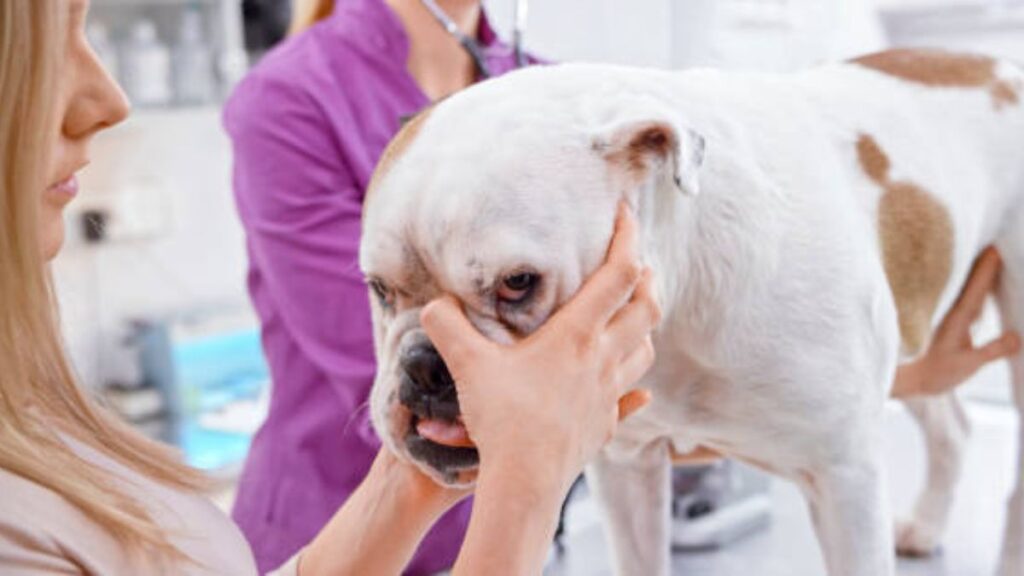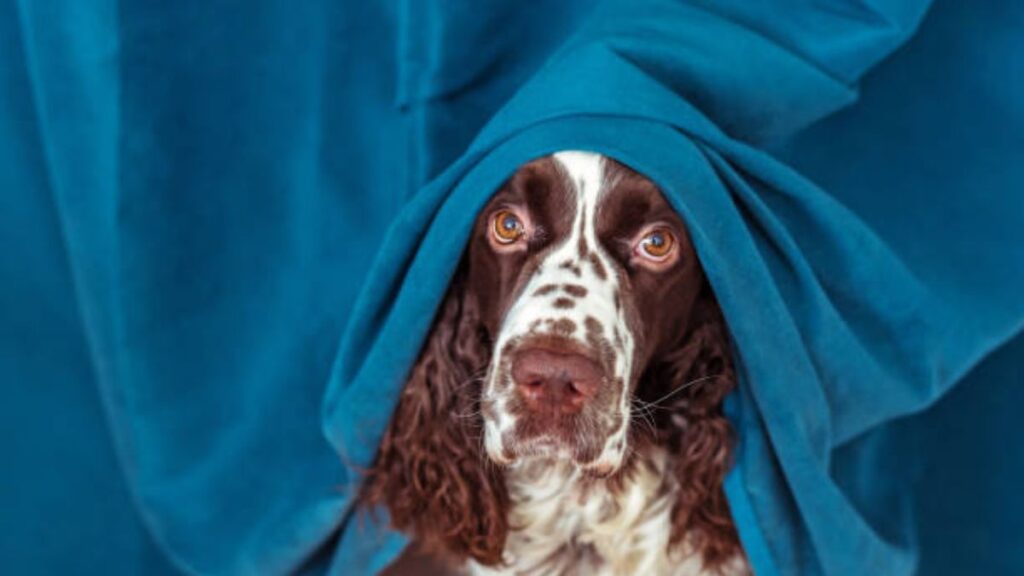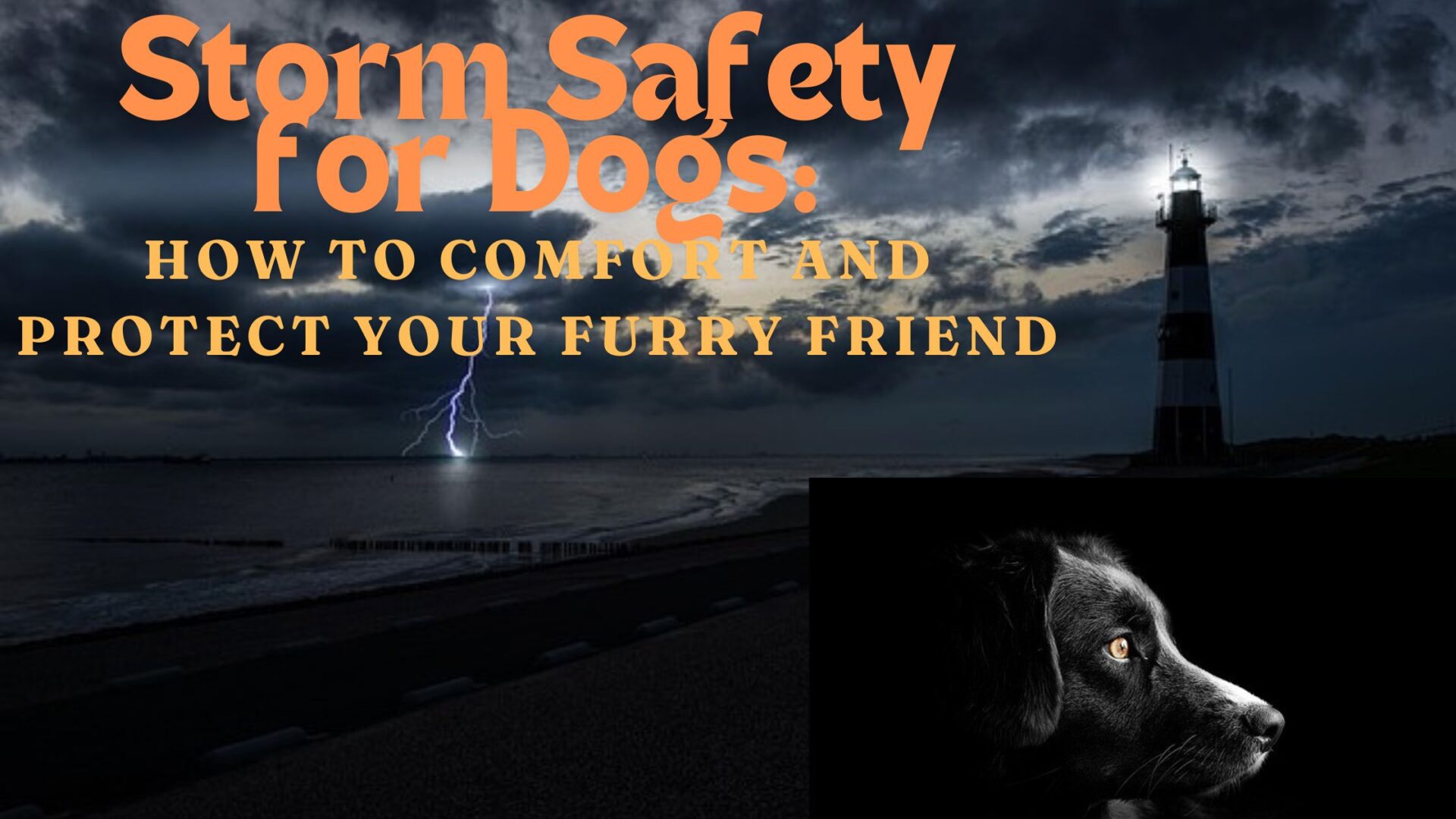Introduction:-
Storm Safety for Dogs: How to Comfort and Protect Your Furry Friend

Storms can be overwhelming and terrifying for dogs. The deafening noises, shimmering lights, and fluctuating atmospheric pressure can trigger anxiety and fear in our beloved canine companions. As responsible pet owners, it is imperative for us to understand how to provide comfort and safeguard our dogs during these unsettling events. In this article, we will delve into effective strategies designed to keep your dog calm and secure during storms.
Storm Safety for Dogs
Strategies for Calming Dogs During Thunderstorms:
- Safe Haven: Create a peaceful, cozy space where your dog feels secure.
- Calming Aids: Consider products like Thundershirts or calming collars to alleviate anxiety.
- Background Noise: Use calming music, white noise, or the TV to mask storm sounds.
- Stay Composed: Remain calm and reassuring to prevent your dog from picking up on your anxiety.
- Distraction: Engage your dog in enjoyable activities, such as playtime, training, or puzzle toys.
- Visual Reduction: Close windows and curtains to minimize visual stimulation.
- Consult a Veterinarian: Discuss medication options or natural supplements for severe anxiety.
- Behavioral Training: Gradually introduce storm sounds while giving positive reinforcement.
- Exercise before the Storm: A tired dog is often less anxious and more likely to rest.
- Comfort Items: Provide a beloved blanket or toy for a sense of security.
Experimenting with a mix of these methods can aid in finding what calms your dog most effectively during thunderstorms.
Why do dogs get scared during storms?
Dogs’ fear of storms can be attributed to several factors:
1. Loud Noises:
- Thunderstorms bring sudden, loud noises that startle dogs.
- Their sensitive hearing makes these sounds more intense and frightening.
2. Pressure Changes:
- Dogs sense barometric pressure changes before and during storms.
- These changes may cause discomfort or anxiety.
3. Static Electricity:
- Storms create static electricity in the air, which dogs feel in their fur.
- This sensation is uncomfortable and alarming.
4. Flashing Lights:
- Lightning produces bright, sudden flashes of light.
- These flashes can be disorienting and frightening for dogs.
5. Wind and Rain:
- The sound of heavy rain and strong winds adds to a dog’s anxiety.
6. Negative Experiences:
- A negative storm experience, like being left alone or hurt, can lead to a general fear of storms.
7. Owner’s Reaction:
- Dogs sense their owners’ anxiety or fear during storms.
- This can increase the dog’s stress levels.
Understanding these factors helps us find ways to comfort dogs during storms, such as creating a safe space, using calming aids, or offering distractions like toys or treats.
What is the Best Safe Space for a Dog During a Storm?
The ideal safe space for a dog during a storm considers their preferences and needs. Here are key characteristics to keep in mind:

1. Quiet and Secluded:
- Choose a space away from windows and external noise, such as a basement, bathroom, or interior room without windows.
2. Cozy and Familiar:
- Ensure the space includes your dog’s bed, favorite blankets, and toys to provide comfort and security.
3. Dim Lighting:
- Darken the room by closing curtains or blinds to reduce the impact of lightning flashes and create a more secure atmosphere.
4. Crate as a Safe Haven (if Trained):
- If your dog is comfortable and secure in a crate, cover it with a blanket to create a den-like environment.
5. Soundproofing and Calming Sounds:
- Use white noise machines, fans, or calming music to mask storm sounds. Some dogs respond well to classical music or pet-specific compositions.
6. Hydration and Treats:
- Keep water and some of your dog’s favorite treats in the safe space for hydration and positive reinforcement.
7. Calming Aids:
- Employ calming sprays, diffusers, or pheromone collars to release soothing scents that reduce anxiety.
8. Hazard-Free Environment:
- Ensure the space is free from potential hazards, such as objects that could be knocked over or cause harm.
9. Proximity to You:
- If possible, set up the safe space in a room where you spend time regularly or stay with your dog during the storm for added reassurance.
Example of a Safe Space Setup:
Location:
- Interior bathroom with no windows.
Comfort Items:
- Dog bed, favorite blanket, and toys.
Sound Masking:
- White noise machine and calming music playing.
Calming Aids:
- Pheromone diffuser plugged in.
Proximity:
- You remain in the bathroom with your dog during the storm, providing comfort and reassurance.
By creating a safe, comfortable, and reassuring environment, you can help your dog feel more secure and less anxious during a storm.
Are there any natural remedies for dog anxiety during storms?
Yes, there are several natural remedies that can help alleviate dog anxiety during storms. Here are some options:

1. Herbal Remedies
- Chamomile: Known for its calming properties, chamomile can help soothe a dog’s anxiety. It can be given as a tea (cooled) or in capsule form.
- Valerian Root: This herb has sedative properties and can help calm an anxious dog. It is available in various forms, including capsules and tinctures.
- Passionflower: Another herb known for its calming effects, passionflower can help reduce anxiety in dogs.
2. Essential Oils
- Lavender Oil: Lavender is known for its calming properties. You can use a diffuser to disperse the scent in the air or apply a diluted solution to your dog’s bedding. Ensure the oil is appropriately diluted and avoid direct contact with your dog’s skin or fur.
- Chamomile Oil: Similar to the herb, chamomile essential oil can also have a calming effect. Use it in a diffuser or as a diluted spray.
3. Pheromone Products
- Adaptil: This synthetic pheromone mimics the calming pheromones released by a mother dog to her puppies. It comes in diffusers, sprays, and collars.
4. Calming Supplements
- L-Theanine: An amino acid found in green tea, L-Theanine can help reduce anxiety. It’s available in supplement form specifically designed for dogs.
- L-Tryptophan: This amino acid is a precursor to serotonin and can help improve mood and reduce anxiety. It is also available in supplement form.
- CBD Oil: Cannabidiol (CBD) oil, derived from hemp, can help calm anxious dogs. Ensure you choose a high-quality product designed for pets and follow the dosing instructions carefully.
5. Natural Calming Treats
- There are many commercially available treats formulated with natural calming ingredients like chamomile, valerian root, and L-Theanine.
6. Bach Flower Remedies
- Rescue Remedy: A blend of flower essences, Rescue Remedy is known for its calming effects and is safe for pets. It can be added to your dog’s water or directly administered.
7. Pressure Wraps
- Thundershirt: This product applies gentle, constant pressure to your dog’s body, which can have a calming effect similar to swaddling a baby.
8. Dietary Adjustments
- Incorporating foods rich in omega-3 fatty acids, like fish oil, can help improve overall brain health and reduce anxiety.
9. Behavioral Strategies
- Exercise: A tired dog is generally less anxious. Ensure your dog gets plenty of physical activity before a storm.
- Training and Desensitization: Gradually exposing your dog to storm sounds at a low volume and rewarding calm behavior can help desensitize them over time.
When trying natural remedies, it’s important to consult your veterinarian, especially if your dog has underlying health conditions or is on medication. They can help you determine the best and safest options for your pet.
Conclusion
When storms approach, your canine companion may face anxiety and distress. However, by employing effective strategies, you can ensure their comfort and safety during these challenging times. Creating a dedicated safe space, utilizing calming products, providing engaging distractions, and maintaining a composed and reassuring demeanor are crucial steps in alleviating your dog’s anxiety. For long-term solutions, desensitization and counterconditioning techniques, implemented under the guidance of your veterinarian, can further help your dog develop resilience and composure during tumultuous weather conditions.
References
- ThunderShirt: source
- American Kennel Club on Calming Products: source
- ASPCA on Desensitization and Counterconditioning: source
- Veterinary Advice on Storm Anxiety: source
